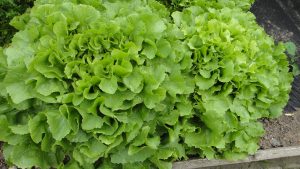St. Patrick’s Day seems to bring out the “Wearin’ o’ the Green” among human folk. But plants wear their green throughout the year, and it is the green that makes plants such unique life forms.
Plants get their green color from a pigment called chlorophyll. Green plants produce their own food supply through a process called photosynthesis, which can only take place when both chlorophyll and light are present.
Other ingredients are also essential for photosynthesis to take place. The plant uses light and chlorophyll to manufacture carbohydrates by recombining carbon dioxide, taken in from the surrounding air, and water, taken in primarily by the roots from surrounding soil. Leaves produce most of the carbohydrates since they generally make up the majority of surface area, but stems and buds contribute, too.
Chlorophyll is only able to use a portion of the light that reaches it. On a sunny day, only about 1 percent of the light received by a leaf will be used in photosynthesis. The rest will be reflected, transformed into heat or used for other plant processes. Conversely, photosynthetic production will be dramatically cut back during cloudy weather or other low-light situations.
Fortunately, not all plants must have maximum light intensity for good plant growth. The optimum light level depends on the species of plant. Some plants require as little as one-tenth of full sunlight. This is why some plants such as impatiens are considered shade plants, while others such as petunias are considered sun plants.
Houseplants also vary in their light needs — keeping in mind that their native habitat is, of course, outdoors. Because light levels inside the home are generally quite low compared to outdoors, we often think of the houseplants in terms of how well they adapt to low light. Most houseplants will grow best in as much light as you can supply in the typical home.
There are a few common houseplants — pothos, snake plant, dracaena and Chinese evergreen — that can adapt quite well to low light. But even these plants do need some light in order to survive. If light is bright enough to read by, these low-light plants will get by.
